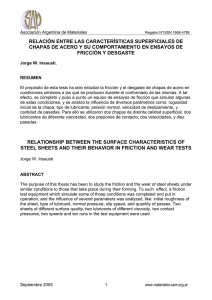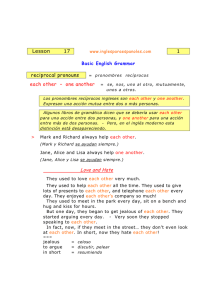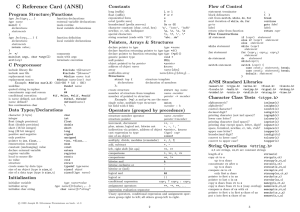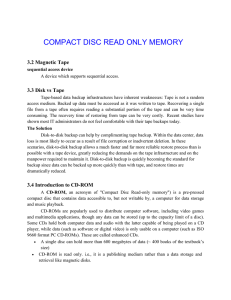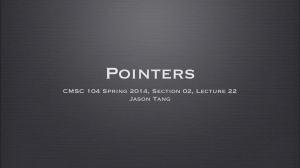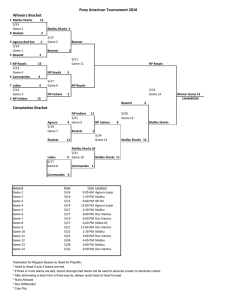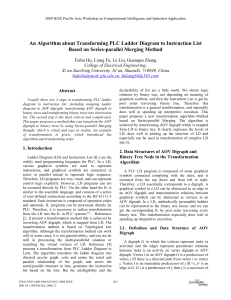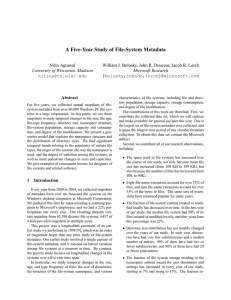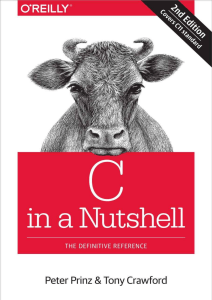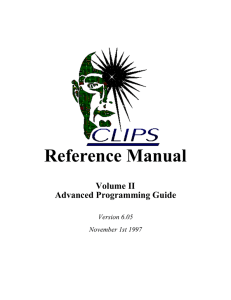Lab Manual 4
Anuncio
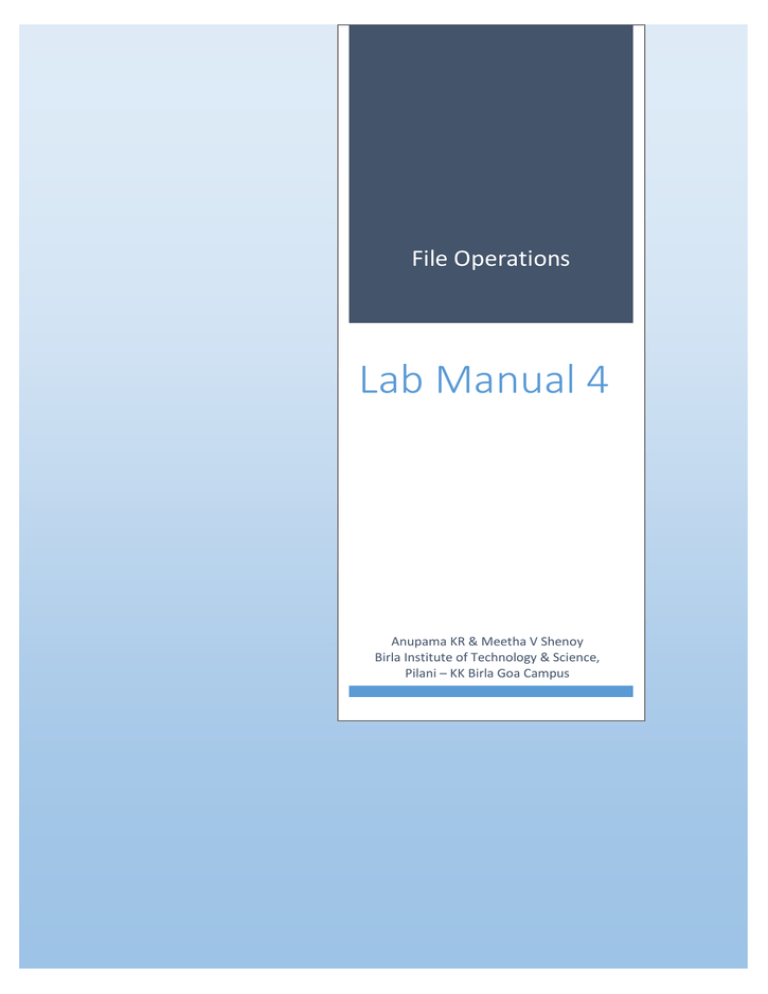
File Operations Lab Manual 4 Anupama KR & Meetha V Shenoy Birla Institute of Technology & Science, Pilani – KK Birla Goa Campus LAB 4 – DOS INTERRUPTS – FILE ACCESS 4.1 Introduction to DOS Interrupts for Files All DOS files are sequential files. All sequential files are stored and accessed from the beginning of the file towards the end. File is usually accessed through DOS INT 21H function calls. In this session we will practice, how to create, read and write a file. There are two ways of handling a file. First via the file control block and second via the file handle. We will use file handle, as this is the most common and easier of the two methods. 4.2 File Handle DOS File Handle Functions - a group of INT 21h functions that allows DOS to track open file data in its own internal tables. File Handle Functions also permit users to specify file path names. For the purposes of the following discussion, reading means copying all or part of an existing file into memory; writing a file means copying data from memory to a file; rewriting a file means replacing a file's content with other data. File Handle When a file is created or opened in a program, DOS assigns it a unique number called the file handle. This number is used to identify the file, so the program must save that information. (Note: a file stream in C/C++/Java is the same thing as a file handle in Assembler.) There are 5 predefined file handles: 0 keyboard 1 screen 2 error output - usually the screen 3 COM1 4 printer Additional user-defined files are assigned file handles starting with 5, 6, 7, etc - which are assigned to your files. File Errors There can be many types of errors in using INT 21h file handling functions. Each error type is identified by a code number. In the following functions, if an error occurs the CF is set and the code number is stored in AX. A list of common file-handling errors: Error Code: Meaning: 1 invalid function number 2 file not found 3 path not found 4 all available handles in use 5 access denied (file may already be open by another process) 6 invalid file handle C invalid access code F invalid drive specified 10 attempt to remove current directory 11 not the same device 12 no more files to be found THE FILE POINTER The file pointer is used to locate a position in a file. When the file is opened, the file pointer is positioned at the beginning of the file. After a read operation, the file pointer indicates the next byte to be read; after writing a new file, the file pointer is at EOF. 4.3 File Interrupts Purpose: Create a File – Function 3CH – Create a File Input: AH = 3Ch DS:DX = address of filename (an ASCIIZ string ending with a zero byte) e.g of ASCIIZ – ‘C:\MASM611\BIN\abc.txt’,0 CL = attribute Attribute – Bit map Bits 7 6 5 4 3 2 1 0 Description shareable - archive directory vol. label system hidden read-only Output: If successful CF =0 , AX = file handle Error: if CF = 1, AX = error code (3, 4, or 5) Possible errors: 1. path doesn't exist 2. all file handles in use 3. access denied --- directory is full or file is read-only Example: Program Segment open a new read-only file called "FILE1" FNAME DB 'FILE1', 0 HANDLE DW ? MOV AH, 3CH ; open file function LEA DX, FNAME ; copy address to DX MOV CL, 1 ; read-only attribute INT 21H ; open the file MOV HANDLE, AX ; handle or err code .CODE Purpose: Opening a existing File – Function 3DH Input: AH = 3DH AL = access and sharing modes 0 = open for reading 1 = open for writing 2 = open for read/write DS:DX = ASCIZ filename Output: CF clear if successful, AX = file handle CF set on error AX = error code (01h,02h,03h,04h,05h,0Ch,56h) Purpose: Writing to a File – Function 40H Input: AH = 40h BX = file handle CX = number of bytes to write DS:DX = data address Output: AX = count of bytes written. If AX < CX, error (disk full). If CF = 1, AX = error code (5, 6) If CX is zero, no data is written, and the file is truncated or extended to the current position Data is written beginning at the current file position, and the file position is updated after a successful write The usual cause for AX < CX on return is a full disk Purpose: Closing a File – Function 3EH A file should be closed after it has been processed. This frees the file handle for use with another file. If the file is being written, closing the file causes any data remaining in memory to be written to the file, and the file's time, date, and size will be updated in the directory entry. Input: AH = 3Eh BX = file handle Output: Error if CF = 1, AX = error code (6) Purpose: Reading File – Function 3FH Input: AH = 3Fh BX = file handle CX = number of bytes to read DS:DX = memory buffer address Output: AX = count of bytes actually read. If AX = 0 or AX < CX, EOF If CF = 1, AX = error code (5, 6) Purpose: Moving File Pointer 42H Input: AH = 42h AL = movement code: 0 = relative to beginning of file 1 = relative to current file position 2 = move relative to end of file BX = file handle CX: DX = number bytes to move (signed) Output: DX:AX = new location in bytes from the beginning of the file If CF = 1, AX = error code (1, 6) Note: CX:DX holds the number of bytes to move the pointer < 0 => move pointer backward > 0 => move pointer forward If CX: DX is too large, the pointer could be moved past the beginning or end of the file. This is not an error, but will cause an error when the next read or write is executed. If AL = 0 => move pointer from beginning of file (forward) If AL = 1 => move pointer from current position (forward or backward) If AL = 2 => move pointer from end of file (backward Purpose: Deleting a File 41H Input AH = 41H DS: DX = address of the ASCII-Z string file name Output AX = error code if carry is set Purpose: Renaming a File 56H Input AH = 56H DS:DX = ASCIZ filename of existing file ES:DI = ASCIZ new filename CL = attribute mask Output CF clear if successful CF set on error, AX= error code (02h,03h,05h,11h) Few More Interesting File Functions GET/ SET FILE'S LAST-WRITTEN DATE AND TIME Input AH = 57H with AL =01h (Set) AL = 00 (Get) BX = file handle Input/ Output CX = time & DX = date Time 15-11 10-5 4-0 Day 15-9 8-5 4-0 Format Hrs Minutes Seconds Format Year Month Day Output CF clear if successful CF set on error AX = error code (01h,06h) GET/ SET FILE'S ATTRIBUTE Input AH = 43H AL =01h (Set) AL = 00 (Get) DS:DX – ASCIIZ file name Input/ Output CX = Attribute Output CF clear if successful CF set on error AX = error code (01h,06h) Tasks 1. Create a new file of any name and in that file write your name and ID. No. twice on two different lines. Hint: make use of carriage return and line feed ASCII codes. Be sure to close the file. 2. To the file resulting from Task1, append your hostel name and room number. Close the file in the end. 3. Open the file you created in Task 2 and read its contents. You can count the number of bytes to be read beforehand. After reading the file, display the data using dos function call 09h. Close the file in the end. 4. Open the file you created in Task 2. Read the entire file one byte at a time and stop after you reach the end of file. After reading the file, display the data using dos function call 09h. Close the file in the end. 5. Create a new file and write your name and ID. No. in it. Use keyboard to input the data. Hint: Use dos function 0Ah for input from keyboard. Also try renaming the file and deleting it, changing its attributes date of creation & time.
